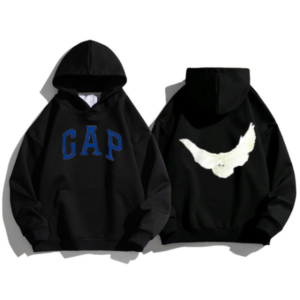
Theaters do not usually have a clothing element in Eric-Emmanuel Schmitt’s literary world; however. They are the quiet thread through the fabric of his characters’ identities. Of course. The stories are famed for their emotional depth and philosophical reflection. But the characters wear the soul on their sleeves–sometimes literally. Whether it is the child’s simple clothes with leukemia. A drag queen’s outlandish costume. Or the lonely businessman’s well-groomed suit. Clothing becomes an extension of inner life. A subtle language through which Schmitt allows readers to glimpse the unspoken.
For instance, even as “Mamie-Rose,” a hospital volunteer dressed in pink. Comes on daily rounds to a sick and dying little boy named Oscar. She becomes something more than a cheerful illustration of the color pink: in the mind of the boy, it means “armor” of compassion and endurance. The ordinary hospital gown worn by Oscar emphasizes to him how vulnerable he is; Mamie-Rose, on the other hand. Dresses in a costume that adds warmth and peculiar magic to the sterile hospital world. Clothing then serves both as metaphor and device: it invites comparison between meanings like fragility and strength, fear and faith.
Schmitt’s La Part de l’autre. Which imagines another life of Adolf Hitler had he been admitted to the art school. Plays a more refined note with clothing. The artist Hitler dresses simply. Unobtrusively. In contrast to the life-historical dictator’s militant uniform and staged iconography. In this duality. Schmitt questions not just destiny. But also the perception of destiny that can be generated with the attiring. The uniformed Hitler becomes a symbol of control and conformity; the artist Hitler, in humble-wear. Introspection and possibility. Schmitt suggests that clothes express and imprison at the same time.
Clothing in Schmitt’s stories is used to smash some expectations. eric emmanuel shorts Like in Monsieur Ibrahim et les fleurs du Coran.Where the on-screen character-a মুসলমান shopkeeper-mentors an infidel Jewish boy. The way he dresses modestly makes it hard for him to be spotted in the streets of Paris. Those three magical foldings are probably enough to conceal that there lived such wisdom and richness in spiritual matters, and all could eventually change the life of this boy. Schmitt uses clothing here to emphasize. How deceptive appearances might be,” for as far as “true elegance rested in character, not cloth.
This is perhaps most clearly shown in Concerto à la mémoire d’un ange. A collection of tales on redemption and moral transformation. One such character is that of a celebrity musician bedecked in elegant. Tailored suits which give him a look of charisma and perfection but torment him from within with guilt and the need for absolution. His polished appearance. In reality.Hides a fractured soul. In contrast. Another character-an absolutely disfigured one. Who wears ragged, utilitarian clothes-turns out to be the most morally luminous figure in the narrative. Schmitt forces us to think critically about the assumptions we make purely on the pretext of outerwear and brings us to believe that sometimes grace is veiled in humility.
And somewhere along the line, an element of performativity occupies fashionable works of Schmitt. In Quand je étois une œuvre d’art, a young man gets transformed. literally transforming into a living sculpture by a manipulative artist. The body becomes the canvas, identity envelopes itself within aesthetics. Clothing or the absence of it becomes a metaphor for the loss of autonomy and objectification. As the hero regains his own self, he makes the transition to the ordinary clothing that signals in his case the recapture of agency. The tale critiques the funding of identity in its representation as a spectacle; it also reminds us of the hidden power dynamics in the act of dressing.
While Schmitt seldom writes about fashion, it plays a significant role in his works. https://ericemanuelapparel.us/ The clothes worn by his characters have psychological and spiritual meanings: they reveal social classes as well as desire, repression, and transformation. In Schmitt’s writing, fashion functions less as a manifest feature that can be seen with the eye and more as existential punctuation. This invites reading beyond the threads into the soul seams.
Ultimately, Schmitt’s genius is in wrapping metaphysical thoughts in simple human stories. His characters might be cloaked in t-shirts, scarves, robes, or uniforms, but they are much more than mere fabric; they are threads of meaning woven through quiet intent. Thus, Schmitt transforms fashion into an invisible language of the heart, telling us that even silence can say much about what is worn.







